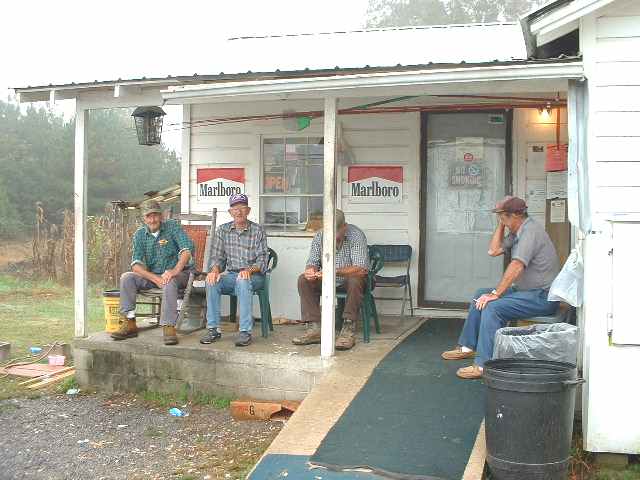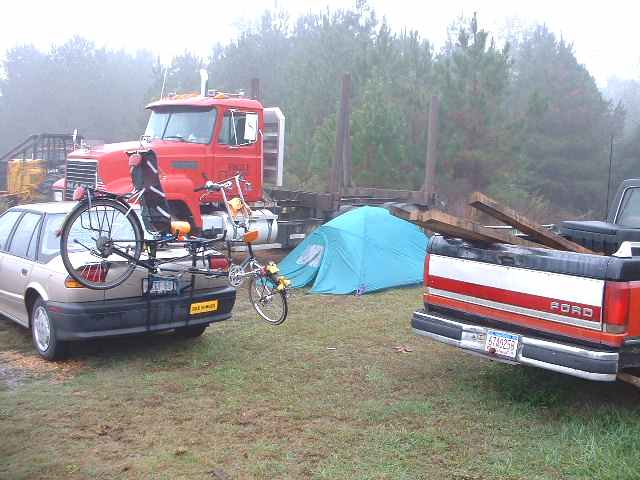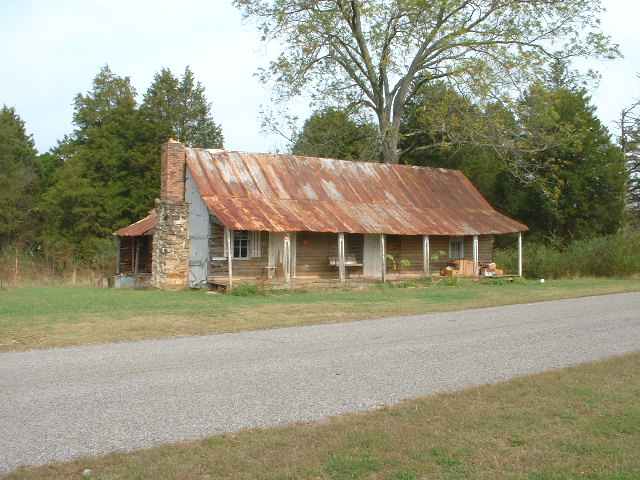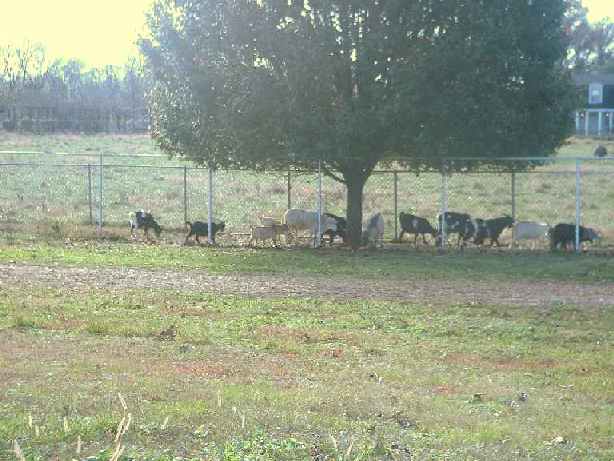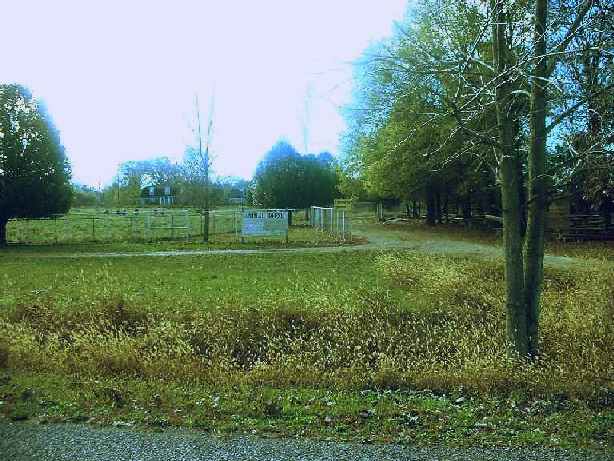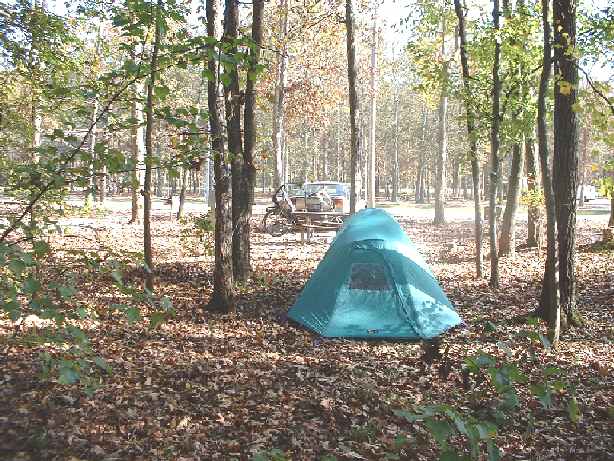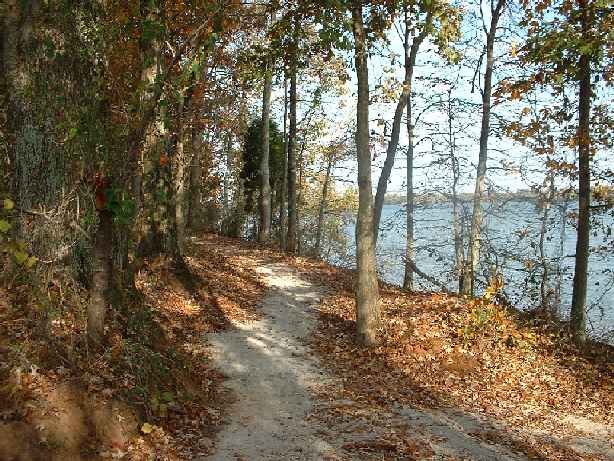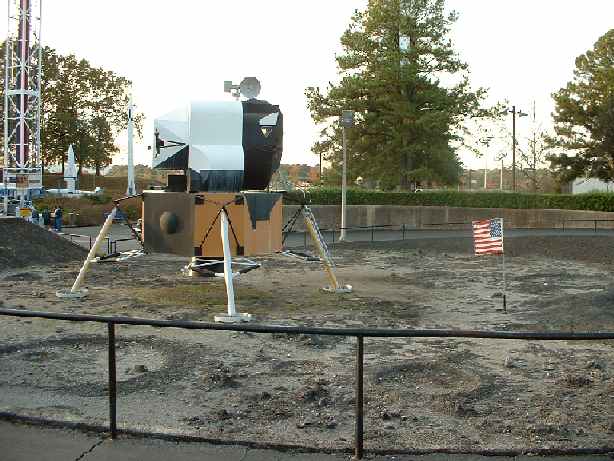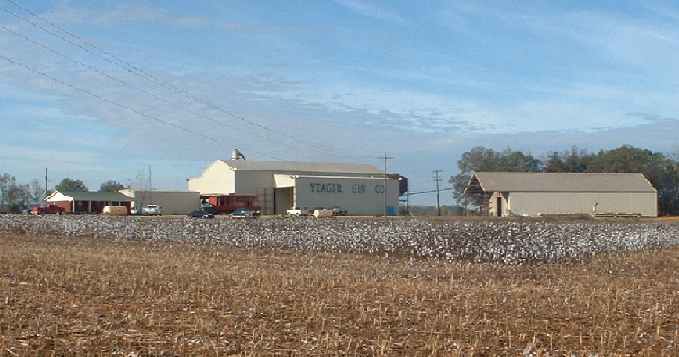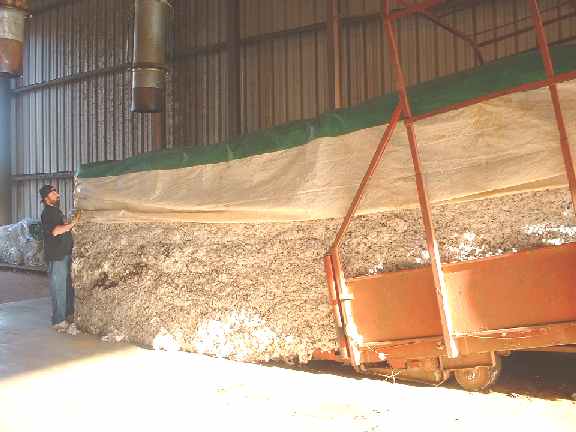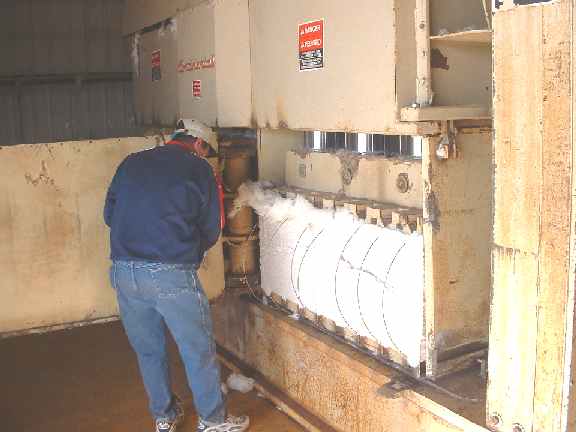Adventure Home Necessary Options
Escape to Northern Alabama - November 2003
Just hours before November, my client told me they had some internal politics to work out before I could proceed further. I was on hold.
I hadn’t expected this time slot to be available. That’s why I took those two weekend October trips in the thumb of Michigan.
Why Alabama? I’d never seen it, but my wife Kathy was born there. Ten years later, mom and dad brought their ten kids to Michigan, looking for something better than picking cotton and raising livestock.
Kathy hadn’t been back since, so you would think she would want to go to visit her oldest living brother, and see where she grew up.
She didn’t have a single problem with this; there were eight of them. The first was that for her, a visit to Kalamazoo is a long trip. The other 7 problems look like a dog and six cats. I’d be going alone.
I’d leave on Tuesday – four days from now - and be away two weeks, or more. There wasn’t much time to plan and pack. The forecasts showed I’d be 20-25 degrees warmer, and dry, the first week.
Using my Map Point CD, I printed maps in enough detail so most roads had names. A brother-in-law pinpointed where they had lived, about 7 miles northwest of Moulton. Just 4 miles south of Moulton is the 750 square mile Bankhead National Forest.
For the past 16 years, I’ve run my business from my home. When I go on a vacation, that’s also a vacation for Kathy – from me! By Sunday, she was disappointed I hadn’t left yet, so I left Monday afternoon.
Valley Bikes in Carmel, north of Indianapolis, features recumbents. Across the street is a rail trail. Mike McDowell, the owner, had bought a lot of RealLITEs from me in the past year, so I decided to visit, then stay at a nearby campground.
It turned out that he had a building behind the shop I could stay in. He gave me a key to the shop for access to the bathroom and a shower. After he closed, Sarah and I took a 15-mile tour around Carmel. Next morning, Mike and I had breakfast.
It was after dark in northern Alabama when I drove into the Joe Wheeler Campground. As the only primitive camper, I got my choice of sites. That didn’t mean much in the dark. All I could hope for was a level area without acorns or rocks, and no widow-maker branches above.
Wednesday was a day when Sarah’s rubber wouldn’t hit the road. The old tin-roofed building where Kathy’s grandparents lived still stands, a mile up the road from where Kathy had lived. Mrs. Craig, whose mother babysat Kathy, still lived across the street. She could name all of Kathy’s brothers and sisters, even though they hadn’t been around for over 50 years. Kathy’s cousin Odean lives on the property where Kathy had lived, and could do the name thing – and she would be 80 in a month.
I went into Moulton to the Lawrence County Archives until they closed at 4pm. I’d be there a lot, discovering the branches of Kathy’s family tree.
So where to stay tonight? I thought I’d give a try in Bankhead National Forest to the south. At the edge of the forest, shoulderless roads go from level to steep. Along the way, I waited while they dealt with a logging truck that had tumbled off the road and down the embankment. It was then I decided I wasn’t going to ride the Forest on my bicycle.
By the time I got to the Forest office, it was closed. A map outside helped me decide to backtrack a bit, then head for a campground.
Soon after I got lost, I met Bennie Ergle (on the right in the picture above). He and his wife own a gas station / convenience store / eating place. He gave me directions to the campground, then said I could stay with them. I set my tent beside his semi-tractor. His wife fixed me a sandwich, and Bennie and I sat on the store’s front porch. I ate; he told stories and chain smoked.
Bennie has a little half-acre garden. The government said he couldn’t have it because the fertilizer would wash down into the creek a mile away. He said the garden provides half of their income. He still has the garden. His friends said if he owed any money, and couldn’t pay it, they could take his land, so he owns everything, free and clear.
I think he thinks like many who live there in Winston County. During the Civil War, they weren’t for the South, and they weren’t for the North. They declared themselves part of the free state of Winston.
Bennie had another problem with his garden - raccoons. Bennie’s answer was to trap them, and give them to men who teach coon dogs to hunt.
When his daughter was younger, there was a need for some creative discipline. The bus was coming before she got outside. He got her up an hour early for a while. When words weren’t working, he told her to get three hickory sticks, because if he wore out the first one, it would save time. For some reason, he never needed to use them.
Just before 7:30, they closed the store and went church. His wife said since Bennie started going, he’s cut way down on his drinking and swearing. Now, she wants him to cut down his smoking, too.
Bennie warned me that his wife gets up early to fix biscuits and other food for the truckers that come by before dawn. I slept soundly and missed all of that.
The Ergle eating place is actually their personal dining room, equipped with one booth, and one round table. I had Mrs. Ergle fix my breakfast of bacon, eggs, and of course, biscuits with honey.
This Thursday would not see me riding my bicycle. I spent much of the day at the Archives. In the afternoon, I went back to where Kathy’s grandfather had lived.
Across the street, there is a zoo. It isn’t an ordinary zoo. It looks like little more than an expensive house, back away from the road, with a chain link fence around the front yard. A lady had started caring for exotic animals that were injured, or that other zoos no longer wanted. When the cost of caring for them rose, she started giving tours to school kids.
A faded sign in front says not to enter without a guide, but no one was in sight and, darn it, I wanted a tour. Their web site says there are daily tours. So I drove up the drive to the house, past lions, and tigers, and ostriches, and more. All were on the proper sides of their fences. I got out and hollered. No response. I left, unsatisfied.
I found Kathy’s family cemetery and visited the man who lives beside it. He has family there too, and said it would be OK for me to set up my tent there. I camped under a tree next to Kathy’s Uncle Dallas, who hadn’t said a word for nearly 40 years.
Next morning I just had to RIDE MY BIKE. As I was getting ready to leave, a car came into the cemetery and headed straight to me. It was the lady who runs the zoo, and I had been caught on video. After she explained how bad I had been, I figured right then and there that I wasn’t going to get that tour.
I pedaled to Hatton, where Kathy had gone to school. At the gas station / convenience store / eating place, I ordered a cheeseburger. At the cooler, I had to decide between a 20oz, or a 1 liter, Coke. It was good I got the larger one. When my burger was ready, I got up in such a hurry that I spilled a third of my drink.
In the countryside, roads are marked as you approach them, so if you want to know what road you are on, you have to turn off of it.
There are quite a number of “storm shelters”, with entrances near the road. There are different designs, but all seem accessible to anyone needing them. I’ll bet they were “fallout shelters” in the 1950s.
I wandered over 30 miles, then went back to Odean’s. When two of her sons soon stopped by, they said Sheriff cars were at the cemetery and they had my tent surrounded. They refused to drive me the mile to the cemetery, saying everything would be OK. It was. However, I decided I’d sleep better at the Joe Wheeler Campground.
The weekend arrived, and the Archives were closed. Near Huntsville, there is a 40-acre, indoor flea market where I actually found things I could use. Then it was south to Hartselle to visit with Kathy’s brother, then north to the Point Mallard Campground at Decatur, where I was to stay two nights.
The first night, as Sarah and I raced around the grounds with the younger kids on bikes, one little boy bragged “I went in the women’s bathroom, and I saw EVERYTHING”. I didn’t ask for details.
Saturday morning, I rode around Decatur. The first guy I met was out riding bicycles with his daughter. Lawson Fletcher mentioned that he had been inducted into the football hall of fame. “If you need anything while you are here, just call or stop by.” He gave me his phone and address.
A guy who exterminated bugs had set up Cook’s Natural History Museum. Besides insects, there were also mammals, rocks, and coral. He also had a piece of the Berlin Wall, but that wasn’t natural. It took me two hours to get through it all.
This town is the home of Decatur Radiator Service. The motto on the side of their building is “Best Place in Town to Take a Leak”.
That night, one of the campground ‘regulars’ told me of a nearby bike trail running along the Tennessee River. He took me to the start, but left me there – he had no headlight. To tell you that twisty, leaf covered, limestone trail was exciting would be understating the situation. To get back, I rode the regular roads.
I slept late this morning; the kids and I had raced around the campground again last night. My friend and I rode it in daylight – both ways. It was fun, but not quite the same. This time, I noticed the sign that says the trail is closed after dark. So that’s why I didn’t see anyone else last night!
With Huntsville not so far away (by car), I decided to see the Space Center. The I-Max Theater is huge, the lunar lander is tiny, and there is a large collection of enormous rockets. The 2-man lunar rover folds into a package small enough to fit into a child’s playpen. And how many of us remember that there were six lunar landings?
Monte Sano State Park is just east of Huntsville, and it has a campground, so that’s where I went for the night. In the last few miles, my car struggled enough for me to understand that “Monte” means mountain. On that hill, the speed limit is 50, or 40 when it rains.
Near the campground, there are several bike trails. In the morning, I went down, then back up, the old entrance road, now blocked off to traffic. They call it the Mountain Mist Trail. With 2.5 miles of 8% grade, they rate it as moderate. If it had been 2.6 miles, I wouldn’t have made it back to the top without stopping.
At the office, I met another cyclist and his mountain bike. He would lead me along a real trail through the forest. A 2-mile round trip of frequent twists and turns around trees, it was new enough not to be on the park map. Half way through, my guide left me, but the last half is just the first half in reverse.
Close to the end, I met Jackee, another cyclist. She thought there was a bike tour going on in downtown Huntsville, and that all the turns would be marked, if I missed the riders. When I got back to my campsite, there were a lot of yellow jackets on my car. I decided to pack up the tent and head for town; I’d had my fill of the trails of Monte Santo.
Well, I wandered all over Huntsville for nearly an hour, seeing no cyclists at all. Then, a single cyclist was coming toward me, quite fast. I turned around and followed her home to ask about the organized ride.
She knew Jackee, invited me into her home to check their club web site, but there was nothing happening. So, she found a map from a ride several weeks earlier, printed me a copy, and I was on my way.
As it was mid-afternoon, I decided to eliminate the 10-mile segment in downtown Huntsville and just do the remaining 20 miles. Only one problem – she didn’t tell me how to get there from her place, so I started wandering around again.
When my car started overheating, I pulled into the parking lot of a paint store and went inside to get directions. Their only customer was a cyclist who knew the gal that had made the map for me. He told me how to get to where I wanted to start. The ride was very nice, but as I approached Ditto Landing, my front tire went flat. It was a thorn – probably from the Monte Santo trail. I was able to patch it without removing the wheel. A check of my computer showed my max speed for this ride was over 30mph. Whew! Before I finished the ride, I needed my lights. I went back to Point Mallard Campground for the night.
For my last two nights in Alabama, wet and cold weather was predicted, so I decided to stay in a motel. I like tenting, where a night costs under $20, and sometimes nothing. When I need a motel, I’ll shop for cheap, but I have rules. I sniff the room for mold or smoke, listen to the heater or air conditioner, lie on the bed, and test for hot water.There were three nearby motels. The first was OK at $32 a night, but the lady wanted to whine about the video tape she had that the government took and hasn’t returned showing JFK selling drugs, or something like that. The second place was a chain with a better facility, for $55 a night, plus tax. As I went for the door, it became $45, including tax. The third place said $32 a night, and I offered them $50 for two nights, and I would pay cash. That did it, I paid, but they didn’t want to give me a receipt, so I said I couldn’t stay. The clerk disappeared through a door, came back, and wrote me a receipt. That was fun!
The next day, I became obsessed with getting a sample of a cotton plant to show my kids. Problem was, most of the fields had been harvested. Finally, at an intersection, I found some plants that had been missed. I picked the best example and put it in a large plastic bag.
At that corner was a building with a sign that read “Yeager Gin Co”. On the chance that they weren’t making an alcoholic beverage, I drove up and met Romero, the manager, who showed me how cotton is processed.
In the fields, it is tightly packed into huge bails the size of a semi-trailer. Each bail is brought in and unloaded from the truck. A guy climbs up a stepladder to the top of the bail. With a 2-foot diameter movable pipe hanging from the roof, he vacuums layer after layer of raw cotton into the processing plant until there is none left.
It is sent through two huge blow driers, then a couple machines that separate the good part (the lint) from the bad part (stems and other pieces). The lint is then blown down into a compactor, 500 pounds at a time, where it is pressed into bails. Two samples of each bail, each bigger than my forearm, are packaged, labeled, and sent to the government for control and testing.
I called home and Kathy told me there were problems. The refrigerator had stopped working, but started again the next day. And she was having enough problems with her car that she didn’t want to drive it. I was looking forward to a few more days, but it was time to go home.
Mammoth Cave was half a day away, so I headed for Cave City. At the Welcome Centers for each state, there are booklets with motel coupons. I found one for a Knights Inn for $22.95. When I got there, I got bad news – it had recently been sold. The good news was the sign in front showing a $19.95 price. I didn’t shop. I moved in, then Sarah and I toured the area.
The next day, I took the 3-hour Violet City Lantern Tour at Mammoth Cave. They had a 2-hour tour, but it started an hour later. I spent the rest of the day driving home.
I was gone almost 14 days, spending $100 on gas, $150 on lodging, $80 on food. Not counting discretionary money, I figure the trip cost me about $18 a day, plus $75 in round trip gas, priced as low as $1.33 per gallon.
Adventure Home Necessary Options
